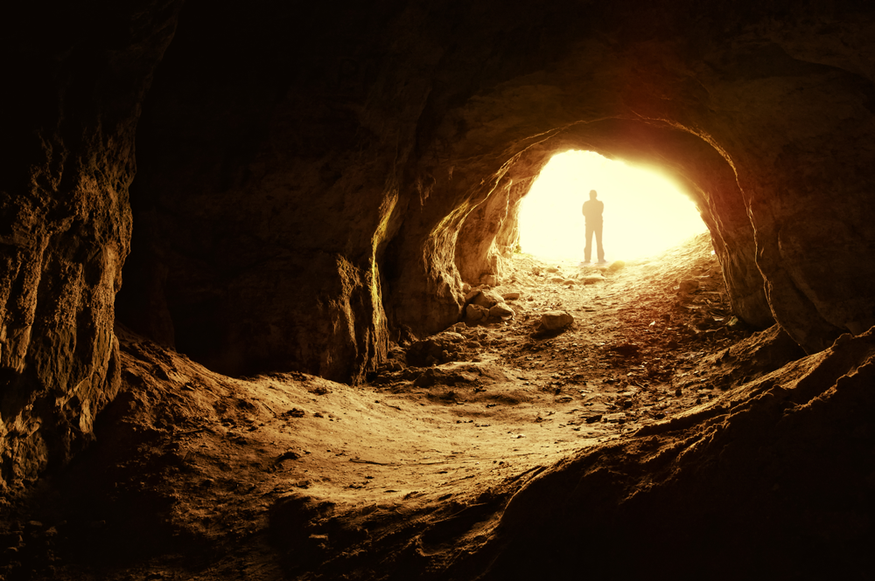The Elusive Nature of Truth
To be deemed the truth, it must first hold true through the passage of time. Yet, as time flows, every aspect of this material world undergoes change; from humans to rocks, they all transform in their distinct ways. For humans, change is inherent in our nature. Physically, we experience aging, growth, and development throughout our lives. Mentally and emotionally, we have changes in beliefs, attitudes, and perspectives with each passing day. Similarly, rocks and other inanimate objects change through processes like weathering, erosion, and geological forces––they occur over vast timescales but are nevertheless inevitable. Therefore, the concept of truth we all profess to understand so thoroughly reveals itself as nothing more than an illusion.
The truth is nonexistent in our world.
Plato's Theory of Forms suggests that there are two kinds of existence: the physical world made of matter, and the abstract world of Forms. Everything that we see in our material world is a form of matter. Whether it’s the device you're using to read this or the sky above, is made of mass and occupies space by having volume, which means it's made of matter. For instance, close your eyes and visualize a perfect circle in your mind. Now, open your eyes and look around you. You may notice circular objects such as the clock on your wall, the ceiling light above, or even a circle you've drawn on a piece of paper. However, none of these physical manifestations perfectly embody the idealized form of a circle that you imagined in your mind––even if it’s a computed image of a circle, it nonetheless remains an approximation. This disparity highlights the distinction between the imperfect representations of reality in the material world and the pure, abstract Forms that exist beyond our physical perception.
Now, the perfect circle we imagined in our minds, with all points equidistant from the center, possessing perfect symmetry and smoothness, is what Plato calls perception of the realm of Forms. This image that was present in your minds can never exist in our material world as there remains a distinct separation between the Matter and the Form, the former being tangible and the latter being intangible. These circles we see around us derive their circularity from the perfect Form of a circle in the realm of Forms, but they fall short of fully embodying its perfection. Even imperceptible irregularities, such as uneven edges in a clock or slight variations in diameter in a ceiling light, highlight the physical world's inherent imperfections, making the fundamental Form of a circle subject to change in Matter. And this is why nothing in our physical world can purely exist as the truth, as truth must be unchanging.
In this way, the circle example serves as an illustration of Plato's Theory of Forms. It suggests that true reality, including the truth of a perfect circle, exists beyond the material world and can only be grasped through intellectual contemplation rather than sensory perception. Our five senses are nowhere near close to capturing the image of comprehensible perfection that lies in all our minds. Whether its circles, chairs, peaches, or even stars and galaxies, they are all temporary and are subjective to change in physical form. However, all Forms in the external, objective world remain eternally unchanged, rendering the realm of Forms the purest representation of truth. These Forms go beyond just circles chairs, etc; they also include the Beautiful, Justice, the Right, the Soul, and more intangible characteristics as such. And all of these manifest themselves as an imitation in our physical world, such as the Soul does through all things living. Yet, while the mind's conception of Form indicates the intelligibility of the realm of Forms, it is crucial to acknowledge that it is not perceptible. Although the mind inherently possesses deep knowledge of the realm of Forms and can comprehend it (important to understanding the universe around us), Socrates and Plato agree that only the soul has access to the truest version of the realm of Forms, with the physical body and the distractions of the material world hindering the soul from fully recalling this knowledge. According to them, accessing the realm of forms requires philosophical contemplation and intellectual pursuit, involving transcending the limitations of the physical world and engaging in deep reflection to grasp the eternal truths that lie beyond sensory perception. And this process of access itself is very mystical in nature, making it difficult to understand how exactly this could be done while one is present in the material world. But as Plato says, “in every man there is an eye of the soul” and there is no one methodical way to reaching that soul that lies in us all. Nonetheless, the mind is said to be very close in nature to the realm of Forms to where many say the mind is itself the purest truth. However, it's crucial to remember that the mind functions as a mediator between the physical world and the realm of Forms, facilitating our imperfect grasp of the unalterable truths that lie beyond our conventional understanding. Therefore, everything around us is nothing but a mere shadow of the truth that lies objectively in the world of Forms, separate from the world of Matter.
The purest form of truth remains elusive until we delve deep into the depths of our soul in search of it.

Representing Plato's allegory of the cave (Theory of Forms): metaphors about people being chained and unable to look beyond the shadows being cast on the wall from behind them. Being unable to move, they think the shadows are reality (study.com).

Comments
Post a Comment